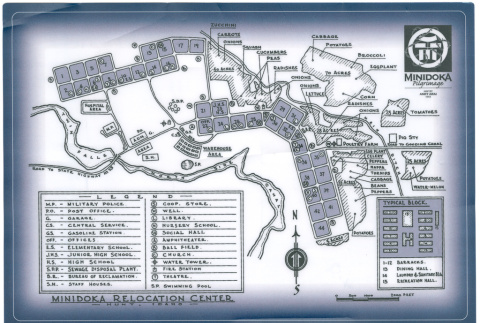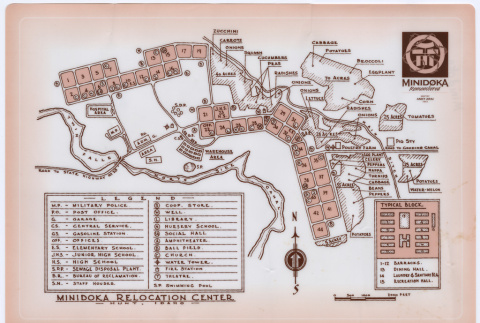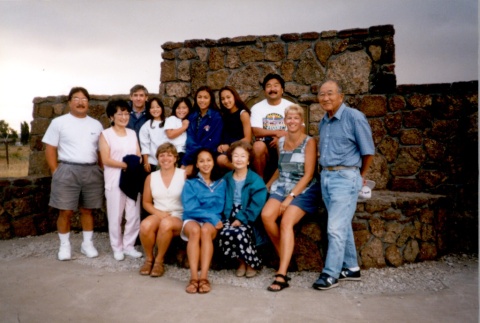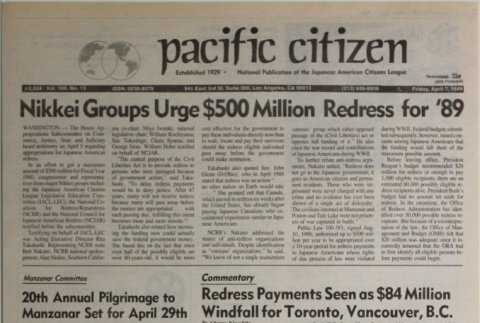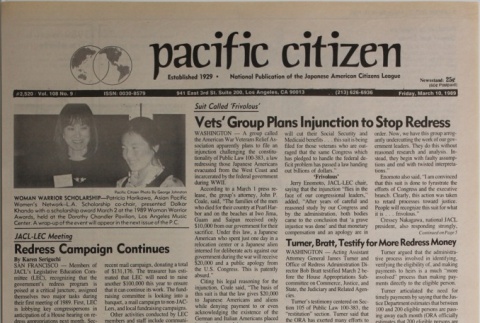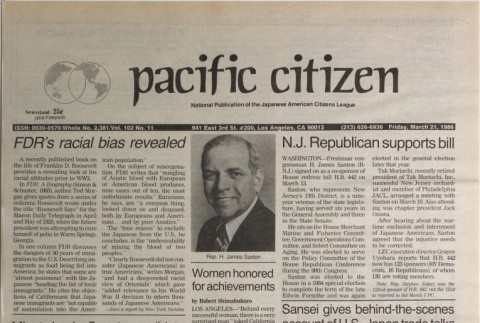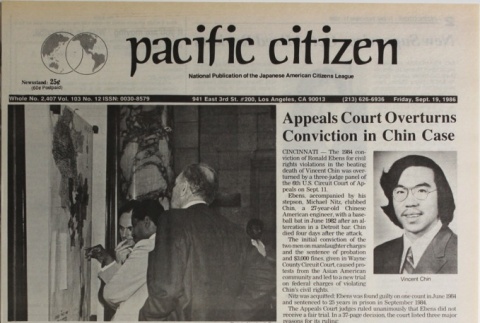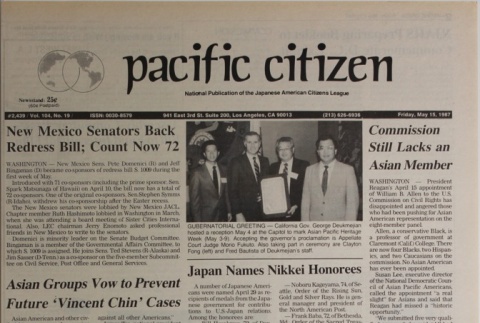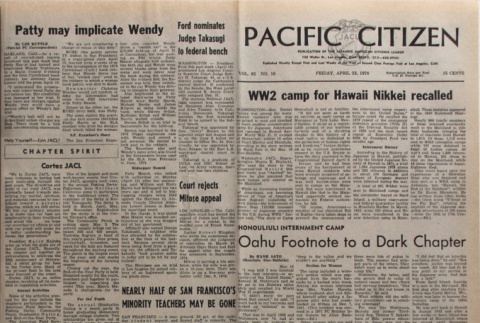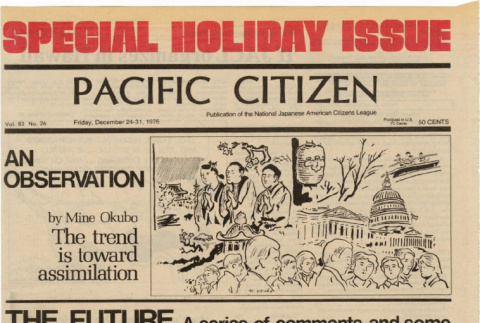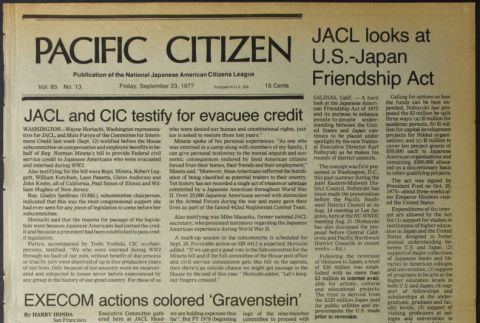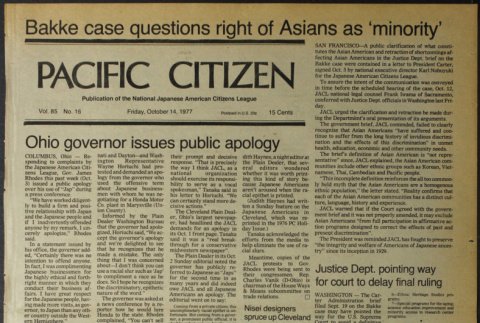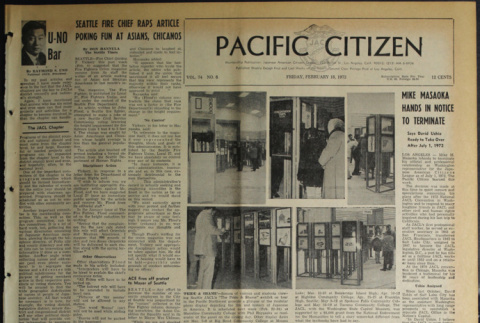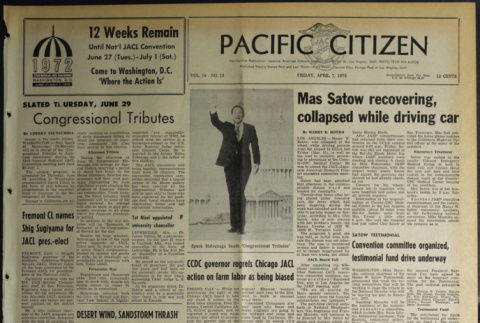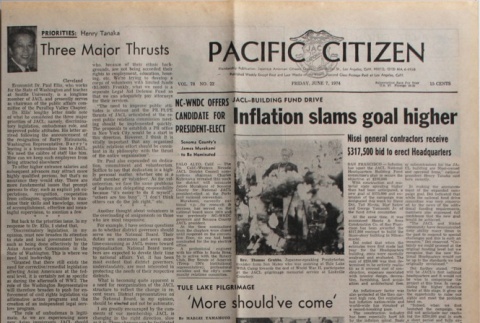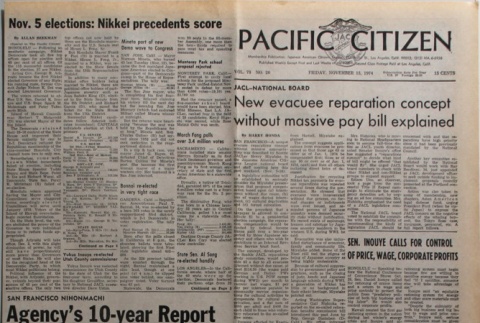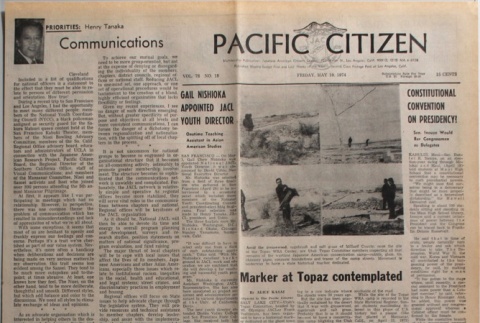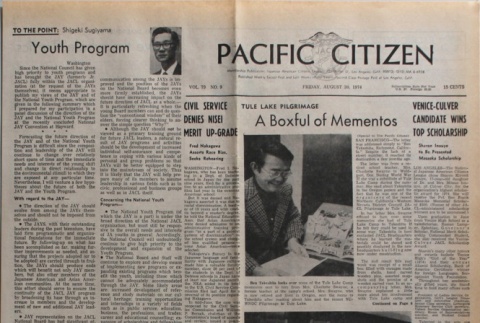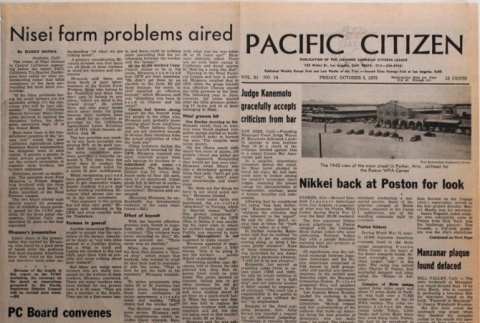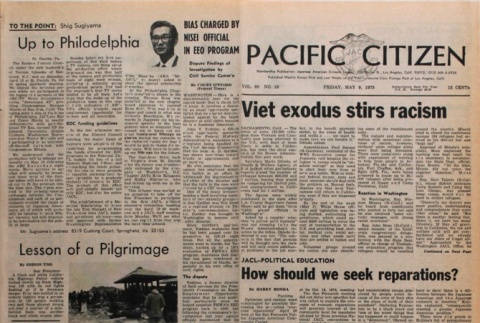Camp pilgrimages
Annual pilgrimages to the sites of former camps have become important events in the Japanese American community. They are an opportunity for former camp inmates to visit places that dramatically affected their lives, as well as a way for younger generations to learn the history of the Japanese American incarceration. Often the pilgrimages last for a few days and include workshops, tours of the former campsites, and memorial services to honor those who died while incarcerated.
Reflections on the past
(815)
Camp pilgrimages
(294)
Related articles from the
Densho Encyclopedia :
Camp pilgrimages,
Sue Kunitomi Embrey,
Warren Furutani
294 items
294 items
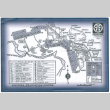
doc
Minidoka map (ddr-densho-430-2)
Map of Minidoka Relocation Center produced by the Minidoka Pilgrimage based off a map made by Anky Arai.

doc
Densho eNews, June 2008 (ddr-densho-431-21)
Article titles: "From the Director," "From the Archive: New Neighbors Among Us: The Japanese American 'Resettlement,'" "Densho News: Densho and Collaborators Interview in Denver," "Densho Wins History Award," "Please Forward! Share the eNews with a Friend and Win a Prize," "National News and Events: Report to Congress for Camps Preservation Grants," "Reminders of National Conferences," "Honorary …
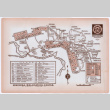
doc
Minidoka Relocation Center Map (ddr-densho-462-1)
Map of Minidoka reprinted for Minidoka Remembered, original created by Anky Arai in 1943

img
Family at a camp pilgrimage (ddr-densho-62-1)
Watanabe family visiting the former site of Tule Lake concentration camp, California.

doc
Pacific Citizen, Vol. 108, No. 13 (April 7, 1989) (ddr-pc-61-13)
Selected article titles: "Nikkei Groups Urge $500 Million Redress for '89" (p. 1), "Manzanar Committee: 20th Annual Pilgrimage to Manzanar Set for April 29th" (p. 1), "Commentary: Redress Payments Seen as $84 Million Windfall for Toronto, Vancouver, B.C." (pp. 1, 5), and "Moshi Moshi: Japan's Retrogression into the Past" (p. 5).

doc
Pacific Citizen, Vol. 108, No. 9 (March 10, 1989) (ddr-pc-61-9)
Selected article titles: "Suit Called 'Frivolous': Vets' Group Plans Injunction to Stop Redress" (pp. 1, 5), "JACL-LEC Meeting: Redress Campaign Continues" (pp. 1, 3), "Pima Indians Recall Injustice Against Japanese Americans" (p. 4), and "'Our Times': Japan's Era from Showa to Heisei" (pp. 4-5).

doc
Pacific Citizen, Vol. 109, No. 15 (November 10, 1989) (ddr-pc-61-40)
Selected article titles: "Conference Report Shunted Back to House: Senate Delays Money Bill for Redress" (p. 1), "JACL, OCA, Etc.: Concerns Discussed at D.C. Anti-Asian Violence Confab" (p. 1), "For the Japanese American National Museum Collection: Artifacts Gathered from Basement of S.K. Uyeda (Taul) Building Being Torn Down in Little Tokyo" (p. 3), and "Sequel to …

doc
Pacific Citizen, Vol. 102, No. 11 (March 21, 1986) (ddr-pc-58-11)
Selected article titles: "Sansei Give Behind-the-Scenes Account of U.S.-Japan Trade Talks" (pp. 1, 8), "From the Frying Pan: Return to Heart Mountain" (p. 5), and "442 Officer Promotes Redress" (p. 6).

doc
Pacific Citizen, Vol. 103, No. 12 (September 19, 1986) (ddr-pc-58-37)
Selected article titles: "Appeals Court Overturns Conviction in Chin Case" (pp. 1, 7), "Bun Vong and Vincent Chin: Similarities and Differences" (p. 3), and "East Wind: The Cross at Tule Lake" (p. 5).
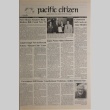
doc
Pacific Citizen, Vol. 104, No. 19 (May 15, 1987) (ddr-pc-59-19)
Selected article titles: "Japan Names Nikkei Honorees" (p. 1), "Asian Groups Vow to Prevent Future 'Vincent Chin' Cases" (pp. 1, 8), "Government Still Denies Constitutional Violations, Author Drinnon Says" (pp. 1, 3), and "Jennings: AA Journalists Can Link Cultures" (p. 8).
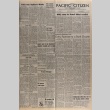
doc
Pacific Citizen, Vol. 82, No. 16 (April 23, 1976) (ddr-pc-48-16)
Selected article titles: "WW2 Camp for Hawaii Nikkei Recalled" (p. 1), "Honouliuli Internment Camp: Oahu Footnote to a Dark Chapter" (pp. 1-2), "'Go for Broke!' vs. 'Farewell to Manzanar'" (p. 2), and "Steel Cross at Tule Lake Camp Site to Be Rededicated at 2nd Pilgrimage" (p. 4).
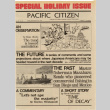
doc
Pacific Citizen, Vol. 83, No. 26 (December 24-31, 1976) (ddr-pc-48-51)
Special holiday issue. Selected article titles: "PC Headlines in 1986" (p. 3), "The Trend Is Toward Assimilation" (p. 4), "Five Critical Political-Social Issues for Nisei and Their Future Well-Being in U.S. Assessed" (pp. 5, 68), "Evacuation Remembered, but Use of Nihongo Fading Away" (pp. 85-87), and "Tule Lake's Steel Cross Rededicated by 1976 Pilgrim" (pp. 101, …
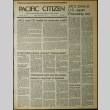
doc
Pacific Citizen, Vol. 85, No. 13 (September 23, 1977) (ddr-pc-49-37)
Selected article titles: "JACL and CIC Testify for Evacuee Credit" (p.1), "JACL Looks at U.S.-Japan Friendship Act" (p.1), "EXECOM Actions Colored 'Gravenstein'" (p.1-2), "Ethnic Past's Preservation Is State's Aim" (p.2), "Reparations Survey Underway" (p.3), "YPCC Reunion-Every 50 Years" (p.4), "No 'Farewell to Manzanar'" (p.8).
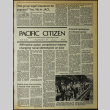
doc
Pacific Citizen, Vol. 85, No. 20 (November 11, 1977) (ddr-pc-49-44)
Selected article titles: "Affirmative Action Compliance Means Changing Racial Stereotypes on Jobs" (p.1-2), "Nisei Among 'Most Powerful L.A. Women'" (p.2), "Pilgrimages and Reparations" (p.4).
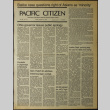
doc
Pacific Citizen, Vol. 85, No. 16 (October 14, 1977) (ddr-pc-49-40)
Selected article titles: "Bakke Case Questions Right of Asians as 'Minority'" (p.1), "Pocatello in Pilgrimage to Minidoka" (p.1), "Ohio Governor Issues Public Apology" (p.1), "JACL Forum Explores Impact of Bakke Case" (p.2-3), "'Honor Thy Mother'" (p.5), "Sculptor Noguchi Speaking at UCLA to Initiate Art Council Lectures" (p.7).
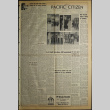
doc
Pacific Citizen, Vol. 74, No. 6 (February 18, 1972) (ddr-pc-44-6)
Selected article titles: "Seattle Fire Chief Raps Article Poking Fun at Asians, Chicanos" (p.1), "L.A. High Tensions Still Unabated" (p.1), "Mike Masaoka Hands in Notice to Terminate" (p.1), "Fear of Hysteria Led to Evacuation" (p.3-4), "Spring Pilgrimage to Manzanar on Mar. 25 Prelude to Dedication" (p.3-4).

doc
Pacific Citizen, Vol. 74, No. 13 (April 7, 1972) (ddr-pc-44-13)
Selected article titles: "Desert Wind, Sandstorm Thrash 700 Making Manzanar Pilgrimage" (p.1), "Congressional Tributes" (p.1), "Issei Group Housing in New York Sought" (p.6)

doc
Pacific Citizen, Vol. 78, No. 22 (June 7, 1974) (ddr-pc-46-22)
Selected article titles: "Tule Lake Pilgrimage: 'More Should've Come'" (pp. 1-2), "Benefactors of Nikkei Remembered" (pp. 1-2), "Record Is Clear, Nisei GIs Turned Attitude Around" (p. 2), and "Cleveland JACL: Plight of the Average J.A." (p. 2).
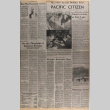
doc
Pacific Citizen, Vol. 79, No. 25 (December 20-27, 1974) (ddr-pc-46-50)
Holiday issue organized into sections A 1-12, B 1-12, C 1-12, and D 1-12. Selected article titles: "Sansei Returns to Tule Lake" (pp. A-1, A-3), "Fears in Tule Lake: Evacuees Remember Them" (pp. A-1, A-3-A-4), "Seattle Nihonmachi: Beat of the '20s and '30s" (pp. B-1, B-9-B-10), "Giri: Righteous Way: Inside Tanforan, Topaz" (pp. B-4, B-8-B-9), and …
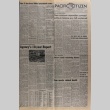
doc
Pacific Citizen, Vol. 79, No. 20 (November 15, 1974) (ddr-pc-46-45)
Selected article titles: "JACL--National Board: New Evacuee Reparation Concept Without Massive Pay Bill Explained" (p. 1), "San Francisco Nihonmachi: Agency's 10-Year Report" (pp. 1, 3), and "Topaz Revisited: Desert Sands Reclaiming History" (pp. 1, 3).
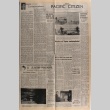
doc
Pacific Citizen, Vol. 78, No. 18 (May 10, 1974) (ddr-pc-46-18)
Selected article titles: "Marker at Topaz Contemplated" (p. 1), "Tule Lake Pilgrimage: More of Wartime Camp Remains than Expected, Says Advance Man on Return" (p. 1), "Living, Working in Japan Unique Life for Sansei" (pp. 2, 4), and "From Happy Valley: Racism and JACL" (p. 2).

doc
Pacific Citizen, Vol. 79, No. 9 (August 30, 1974) (ddr-pc-46-34)
Selected article titles: "Tule Lake Pilgrimage: A Boxful of Mementos" (pp. 1, 6), "National Dialogue: 'Save the Whale' Tactics" (pp. 2-3), "Hawaiian Members in Congress Comment on Nixon's Resignation" (p. 3), and "American Interest in Asian Cuisine Growing But More Promotion Urged" (p. 6).
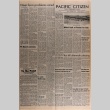
doc
Pacific Citizen, Vol. 81, No. 14 (October 3, 1975) (ddr-pc-47-39)
Selected article titles: "Nisei Farm Problems Aired" (p. 1), "Nikkei Back at Poston for Look" (pp. 1-2), "Manzanar Plaque Found Defaced" (p. 1), and "From the Frying Pan: John Dean on Redress" (p. 2).

doc
Pacific Citizen, Vol. 80, No. 18 (May 9, 1975) (ddr-pc-47-18)
Selected article titles: "Viet Exodus Stirs Racism" (pp. 1-2), "Minority One: Lesson of a Pilgrimage" (pp. 1-2), "JACL-Political Education: How Should We Seek Reparations?" (pp. 1-2), and "Book Review: A Crucial Japan-American Period" (p. 4).

doc
Pacific Citizen, Vol. 81, No. 19 (November 7, 1975) (ddr-pc-47-44)
Selected article titles: "Inouye, Mineta Questioning Big Government Spending" (pp. 1, 3), "JACL Gets $75,000 Catholic Grant" (pp. 1-2), "E.O. 9066 Reparations Poll in Favor of Payment to Evacuees" (p. 1), "Poston Indians Welcome Pilgrimage" (p. 5), and "Dances in Camp" (p. 5).
